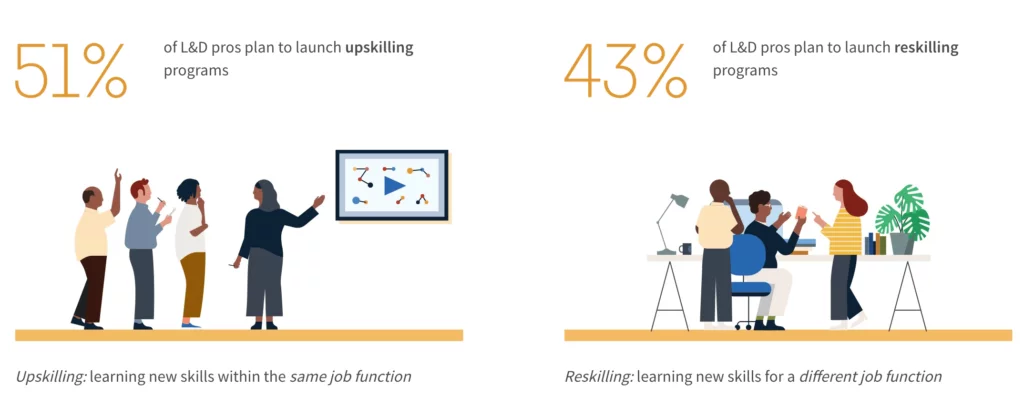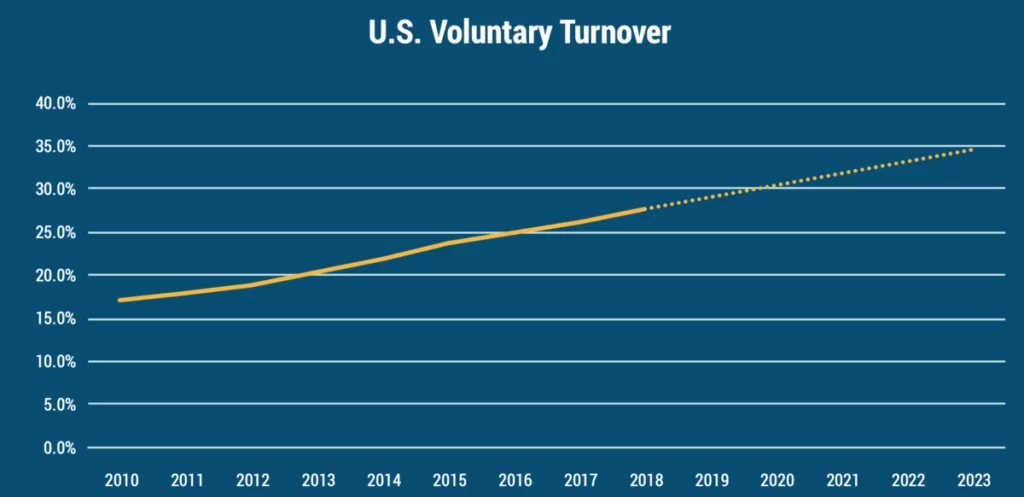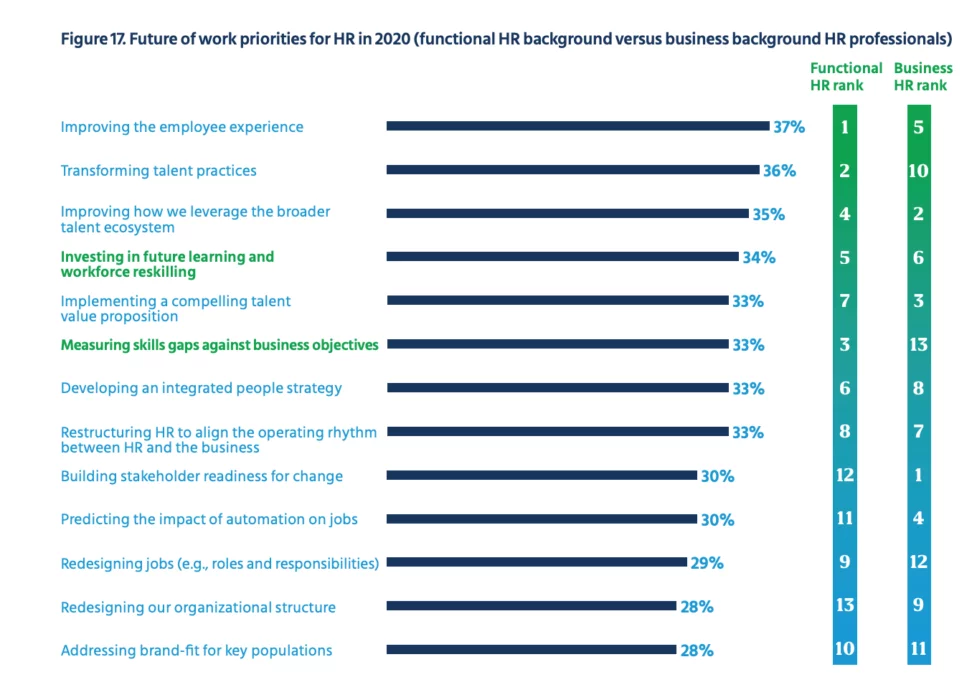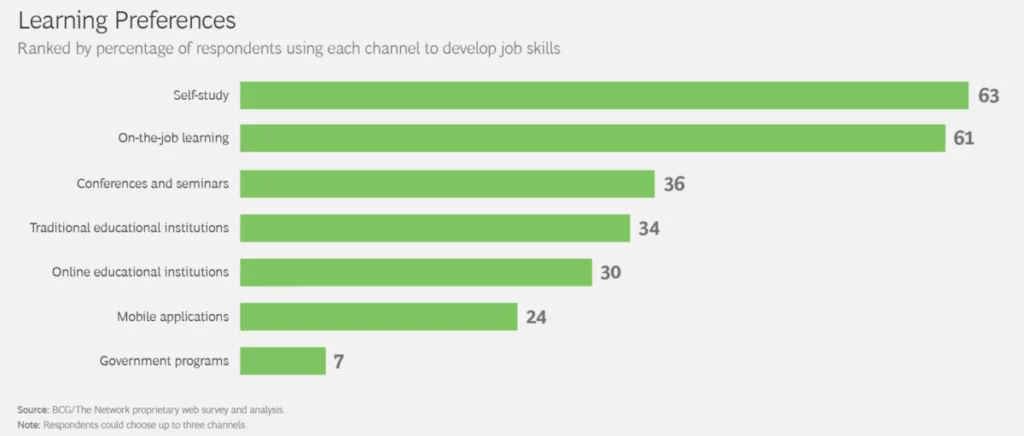It is evident that we are heading towards a new work reality, and many companies are figuring out how to navigate this unfamiliar terrain. While organizations have claimed for years that employees are their greatest asset, this tagline has never been more accurate today. Harnessing the power of an existing workforce to reskill and upskill will be one of the hallmarks of a successful company as we step into the Next Normal.
In this article, we will explore the global trends around hiring, retention, and technology’s impact on the growing importance of reskilling and upskilling.
What is reskilling and upskilling?
First, defining the actual terms and how they can be applied is instrumental in implementing reskilling and upskilling strategies at your company.
Reskilling – Refers to skills that an employee will learn to perform a new role at their current company. As organizations shift, certain roles will become obsolete. Reskilling taps into a company’s existing talent pool to train employees to perform a new job function within a company.
Upskilling – Refers to teaching employees skills to perform and advance within their current job. Upskilling is used to minimize talent gaps and to cultivate a culture of ongoing learning within a company.

Retain employees and cut company costs
According to the Work Institue, the cost of losing a worker in the US is around $15,000. That amount adds up.
Voluntary turnover in 2018 in the US has cost companies an estimated $617 billion. That staggering number can be prevented as the number one reason for employees deciding to seek new employment is due to lack of career development.

Investing in your current workforce through reskilling and upskilling can save a company millions of dollars a year. Mercer’s 2020 Global Talent Trends Report states, “Globally, reskilling is seen as the top talent activity most campable of delivering ROI in the eyes of executives.”
In addition to cutting costs, reskilling and upskilling imbues employees with motivation and allegiance towards their company. When organizations make it a priority to actively invest in their employees’ learning and development, their levels of retention, employee satisfaction, and productivity rise.
A new way to hire and recruit
As companies transform to accommodate a post-pandemic reality, HR departments are in a unique position to finetune their hiring and recruitment strategies. In a competitive market, companies strive to differentiate themselves to attract top talent. But what if they are missing what is already in front of them?
To stay agile and respond to an ever-changing market, HR needs to audit their current employee roster and assess the existing talent ecosystem. Mercer found that 2 out of 5 HR leaders acknowledge that they do not know what skills they have in their own workforce.

With all the time and energy HR devotes to recruiting, hiring, and onboarding, they are missing the mark by not properly evaluating current skills and competencies internally. An effective talent audit can give HR the upper hand to map future jobs and invest in reskilling and upskilling their existing dedicated workforce.
A surge in digital transformation
According to McKinsey, “to deal with the crisis and its aftermath, companies not only need to develop digital solutions quickly but also to adapt their organizations to new operating models and deliver these solutions to customers and employees at scale.”
Prior to COVID-19, companies were experimenting with new technologies and finding it challenging to encourage software adoption amongst employees.
As companies need to move faster and smarter to select the right software to drive their organizations ahead, they need to close the digital skills gaps within their workforce.
Upskilling employees on new software at scale cannot be achieved by traditional methods like in-classroom learning sessions. Employees favor autonomy as shown by the results of the Decoding Global Talent Report, with 61% of respondents preferring online training when it came to acquiring new skills for their jobs.

Employees need resources that will provide flexibility and ease whether they are learning skills to transition roles or enhance their already existing ones.
Future proof your workforce
Organizational and digital transformation are happening more rapidly than ever. Part of planning for the Next Normal must include an HR strategy that invests in reskilling and upskilling employees with an emphasis on digital adoption solutions that can facilitate training remotely and minimize digital skills gaps.
Companies that reskill and upskill their workforce can expect a more cost-effective, agile, motivated, and productive organization to emerge.

